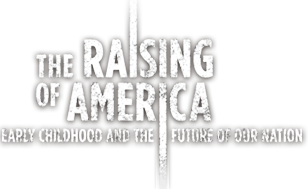Was Perry Preschool Worth It?
to watch purchased videos
Add to Your Favorites
Remove from Your Favorites
Clip Transcript
NARRATOR: The first study to catch the attention of Rolnick and other economists was from a high-quality early childhood experiment for low-income children in Ypsilanti, Michigan, called Perry Preschool. Founded in 1962, Perry Preschool grew out of the spirit of that time—the growth of the civil rights movement, desegregation and equal opportunity. The Perry children had master’s level teachers and low student-to-teacher ratios. Educators even visited the families at home every week.
Cheryl Polk, President, HighScope Educational Research Foundation:
The children that were receiving the Perry intervention received 3 hours per day of a cognitively-rich preschool program, right? They focus on things such as math, literacy, play-based approaches, focus on engaging their imagination and their own investment in their learning.
NAR: The Perry kids were compared to a group of their peers, a control group, who weren’t in the program. Both groups have been followed for 40 years.
Arthur Rolnick, former Senior VP and Director of Research, Federal Reserve Bank of Minneapolis
They found that the children that were in the high-quality program were less likely to be retained in the first grade, were less likely to need special ed, were more likely to be literate by the sixth grade, graduate high school, get a job, pay taxes, start a family. And the crime rate between the two groups, the randomized group and the controlled group, the crime rate goes down fifty percent. So those looked like pretty good outcomes!
Cheryl Polk:
They became what we think of as model citizens in our country, despite their modest beginnings.
NAR: And those outcomes equal hard dollars. The program was expensive. But economists calculated the benefits: the Perry students were more likely to stay on track in school, have higher skilled jobs and contribute more in taxes, and less likely to incur the social costs of welfare and prison.
Cheryl Polk:
The youngest children of the Perry Preschool studies are now 52 and the oldest children of the Perry preschool studies are now 56. So we’ve been following children from the Perry Preschool experiment for 50 years.
James Heckman, Nobel Laureate in Economics, 2000, University of Chicago:
What did we learn? Many things. It’s very successful in terms of the economic performance of the children. For each dollar invested, you get back somewhere between 7 and 10 percent per annum over the lifetime of the child. Which is a huge rate of return.
NAR: That translates, depending on the study, to a payoff of 7-16 dollars for every dollar spent on the program.
James Heckman:
What we found is that some of those same traits that are starting to be fostered early in life—solving problems but also getting along with others and basically planning in a wise way—payoff, and payoff substantially.
NAR: Yet, despite the benefits, today public investment in affordable, high-quality programs like Perry is so low, only a fraction of our children can attend them.


